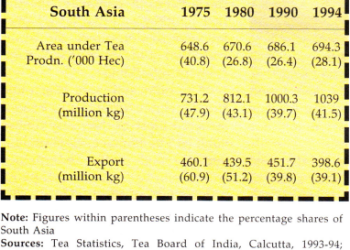Dinesh Weerakkody
AL Goonerathne, managing director, Commercial Bank says that diversification and not being mere niche players is the key to a bank’s survival.
Mr Nihal Fonseka, Dy CEO of Hongkong Bank in an interview with ‘Business Today’ stated that in troducing technology just for the sake of it should be resisted because both software and hardware are still relatively expensive. What is your view about investing in technology?
I agree with Mr Nihal Fonseka, Dy CEO of Hongkong Bank that the cost of software and hardware is still relatively expensive. Nevertheless, I am of the opinion that the cost can be justified if the technology is intended to serve a specific purpose. In the case of Commercial Bank, we have made heavy. investments in technology primarily to support an expanding branch network.
Then can’t we argue that technology is the key to growth?
Yes. As mentioned above, if the bank intends to grow in size, in terms of the number of customers and branches whilst controlling costs, an investment in technology has to be made. This would provide for cost-effective service levels to be provided to customers.
Also, how would you rate our banks’ technological innovations, when compared with commercial banks in the Asian Region?
As far as I am aware, our banks compare very well with other banks in South Asia i.e., particularly in the Indian subcontinent where our banks may have a technological edge over the other banks. Nevertheless, the banks in South East Asia, notably in Singapore, Malaysia and Indonesia, would have a technological superiority due to the fact of their having a better communication infrastructure.
On the other hand, can our human resources, deal with the rapid changes taking place in technology?
Our human resources could deal with the rapid changes taking place in technology as there is at very keen interest in technology in the commercial sector. Besides, the substantial number of training opportunities provided by educational centers and other professional institutes would enable our Human Resources to be in touch with the changes taking place in technology
Talking about the fierce competition that has gripped the banking sector over the last two years, can one argue that the corporate sector has benefited by way of reduced interest rates rather than greater service brought by way of technology?
The corporate sector has benefited in both respects, i.e., through reduced interest rates arising out of competition and also from the improved service levels facilitated through the means of modern technology.
The Korea Exchange bank, Colombo branch, CEO, says there are too many banks in Colombo competing for business and that there is no purpose in investing in technology, what is your view?
As explained earlier, an investment in technology is indeed warranted and justified if a bank has a branch network and continues to expand. On the other hand, if the bank has no intention of establishing a branch network nor offering retail banking services, then a heavy investment in technology would not be needed. In regard to the level of competition, despite there being several banks, there is sufficient business particularly if the bank caters to most sectors of the economy.
Talking about general banking, do you consider that banks in order to remain competitive will have to position themselves as key niche players without trying to be all things to all people?
On the contrary, banks will have to diversify and would need to offer all facets of services to customers in order to remain competitive. Unlike in the past banks cannot rely anymore on being niche players as there would be a greater need to diversify risk and maximize returns by operating in different markets.

Also it seems that some banks are shifting their focus to retail banking in response to the opportunities brought about by the open economy. Please comment.
I would say all the indigenous banks and some of the foreign banks have realized the opportunities in the retail banking sector and are increasingly focusing on retail banking as the returns from this sector are more attractive than corporate banking. Furthermore, retail banking also provides an opportunity to spread risk levels amongst several borrowers. The open economy has provided enough opportunities for small and medium businesses to operate viably. Most indigenous banks therefore are gearing up to cater to this sector.
Talking about deposits mobilized by the commercial banks in 1996 the total deposit as a percentage of total bank resources declined by 69% in 1995 to 67% reflecting a reduction in deposit mobilization. What are the reasons you attribute to this reduction?
I would of course attribute such a drop to reduced levels of economic activity resulting in lower levels of disposable income in the hands of customers. It was also partly due to the banks using other sources of funding thus reducing their traditional dependence on customer deposits. However, speaking of our bank, our share of deposits in the banking sector increased during this period clearly showing that our deposit mobilization efforts have been successful.
On the other hand, the money lenders seem to be dominating the informal sector. Why has the organized financial sector, failed to meet the needs of the informal sector?
Until the early 1980’s, local banks were reluctant to operate in the informal sector because they were not structurally geared to handle this type of business. Nevertheless, local banks have gradually been making inroads into this type of market by offering products such as pawning to meet the demands of this sector. Documentation procedures have been simplified to minimize the formalities involved.
On a general note, are you happy with the Central Bank’s decision to lower the reserve ratios?
Yes, I am pleased by the reduction in the reserve ratios as it has facilitated barren funds to be mobilized for lending purposes.
Why has this benefit not been passed on to the public, so far by the banks? The current lending rate still remains around 20%.
Benefits in the reduction in the reserve ratio have been passed onto the public, as the prime lending rate has come down to around 14%. Our bank recently affected across-the- board interest rate reduction of 1% and had also selectively reduced the interest rates further on a case- by-case basis. It should be remembered that despite these reductions we are committed to pay the higher rates already agreed on deposits made with us earlier.
Lastly, since the two State Banks control 60% of the market share, should the State Banks be privatized and our financial regulations be further deregularized?
I would not wish to comment on the subject of privatization of State Banks. However, with regard to deregularization of the financial sector I feel it is desirable to do so in order to keep pace with the expansion of the open economy.
Dinesh Weerakkody is manager of a commercial bank. He is the author of Selected Essays on Foreign Affairs Part 1 and Part 2.
REGRET
Business Today regrets the error in the answer to the last question of the banking article ‘The Heat is On’ of the July 97 issue. The correct answer is published below.
Q. As a final question, would you consider the recent reduction on the reserve requirement as inflationary or as an injection to boost the ailing corporate sector?
A. There is no doubt that it was meant to be the latter. Initially, those who benefited most were the multi-banked strong corporates with access to facilities linked to money market rates. If low interest rates are sustained, smaller businesses will eventually benefit once banks are able to reprice their term liabilities. Sri Lankan corporates, especially those who are involved in internal trading and tourism, need a break and lower interest rates will definitely help.
However, it is too early to say whether the liquidity experienced now, will eventually fuel inflation. So far, there are no alarm signals and the impact on the overall economy has been positive.




